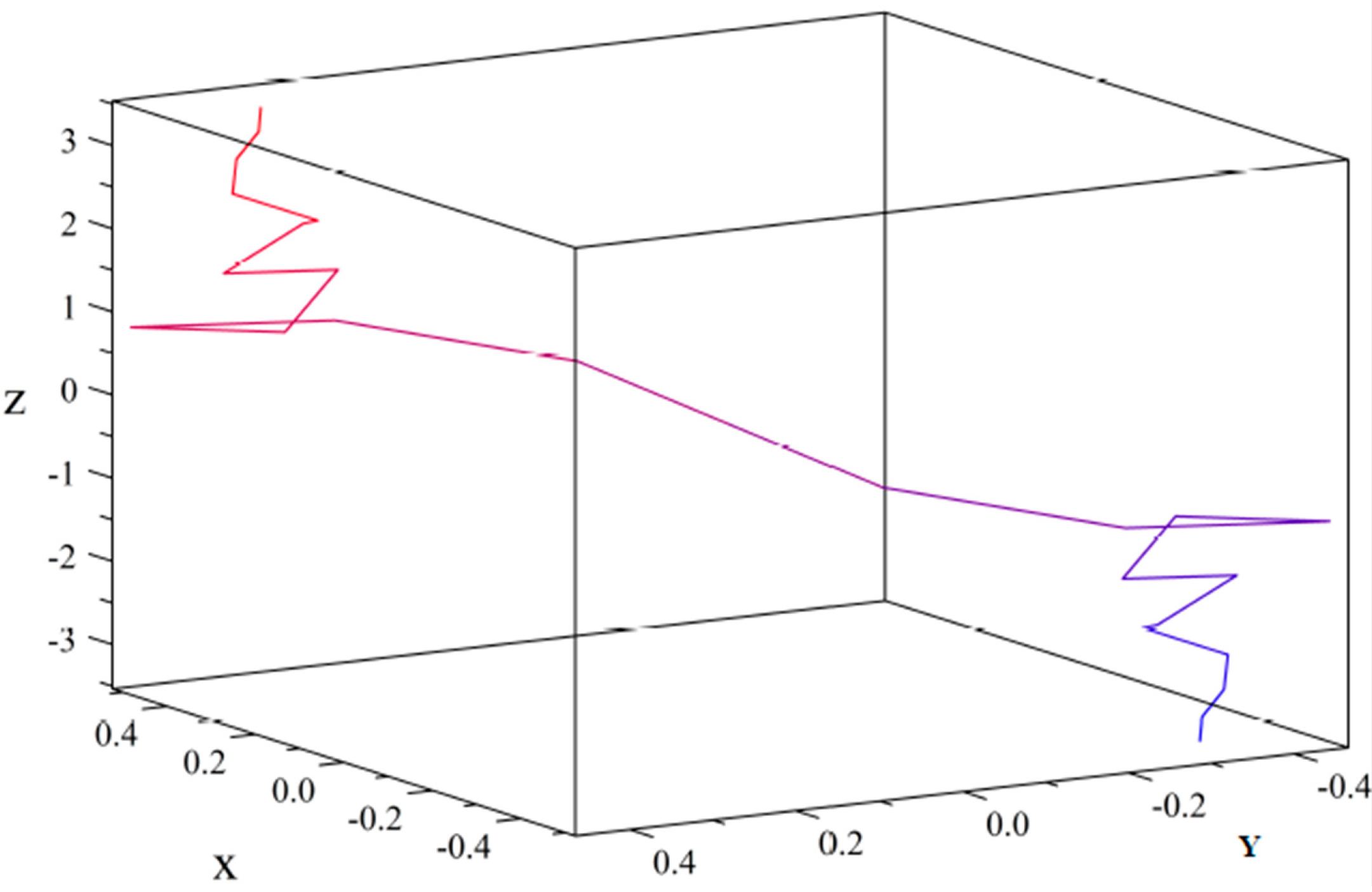Motion along a Space Curve with a Quasi-Frame in Euclidean 3-Space: Acceleration and Jerk
Abstract
1. Introduction
2. Preliminaries
3. Main Results
4. Applications
5. Conclusions
Author Contributions
Funding
Institutional Review Board Statement
Informed Consent Statement
Data Availability Statement
Acknowledgments
Conflicts of Interest
References
- Siacci, F. Moto per Una Linea Gobba. Atti R. Accad. Sci. Torino 1879, 14, 946–951. [Google Scholar]
- Whittaker, E.T. A Treatise on the Analytical Dynamics of Particles and Rigid Bodies; Cambridge University Press: New York, NY, USA, 1944. [Google Scholar]
- Casey, J. Siacci’s resolution of the acceleration vector for a space curve. Meccanica 2011, 46, 471–476. [Google Scholar] [CrossRef][Green Version]
- Küçükarslan, Z.; Yılmaz, M.Y.; Bektaş, M. Siacci’s theorem for curves in Finsler manifold F3. Turk. J. Sci. Technol. 2012, 7, 181–185. [Google Scholar]
- Özen, K.E.; Tosun, M.; Akyiğit, M. Siacci’s theorem according to Darboux frame. An. St. Univ. Ovidius Const. 2017, 25, 155–165. [Google Scholar]
- Özen, K.E.; Güner, M.; Tosun, M. A note on the acceleration and jerk in motion along a space curve. An. St. Univ. Ovidius Const. 2020, 28, 151–164. [Google Scholar] [CrossRef]
- Özen, K.E. Siacci’s Theorem for Frenet curves in Minkowski 3-space. Math. Sci. Appl. E-Notes 2020, 8, 159–167. [Google Scholar] [CrossRef]
- Resal, H. Traite de Cinematique Pure; Mallet-Bachelier: Paris, France, 1862. [Google Scholar]
- Özen, K.E.; Dündar, F.S.; Tosun, M. An alternative approach to jerk in motion along a space curve with applications. J. Theor. Appl. Mech. 2019, 57, 435–444. [Google Scholar] [CrossRef]
- Güner, M. On the jerk in motion along a space curve. Math. Methods Appl. Sci. 2021, 44, 7407–7415. [Google Scholar] [CrossRef]
- Schot, S.H. Jerk: The time rate of change of acceleration. Am. J. Phys. 1978, 46, 1090–1094. [Google Scholar] [CrossRef]
- Tsirlin, M. Jerk by axes in motion along a space curve. J. Theor. Appl. Mech. 2017, 55, 1437–1441. [Google Scholar] [CrossRef][Green Version]
- Dede, M.; Ekici, C.; Gorgulu, A. Directional q-frame along a space curve. Int. J. Adv. Comput. Sci. Appl. 2015, 5, 775–780. [Google Scholar]
- Körpinar, T.; Sazak, A.; Körpinar, Z. Optical modeling of Hasimoto map for antiferromagnetic timelike optical fiber. Optik 2022, 251, 1–8. [Google Scholar] [CrossRef]
- Körpinar, T.; Demirkol, R.C. Berry phase of the linearly polarized light wave along an optical fiber and its electromagnetic curves via quasi adapted frame. Waves Random Complex Media 2022, 32, 1497–1516. [Google Scholar] [CrossRef]
- Körpinar, T.; Demirkol, R.C.; Körpinar, Z.; Asil, V. New magnetic flux flows with Heisenberg ferromagnetic spin of optical quasi velocity magnetic flows with flux density. Rev. Mex. Fis. 2021, 67, 378–392. [Google Scholar] [CrossRef]
- Soliman, M.A.; Abdell-All, N.H.; Hussein, R.A.; Youssef, T. Evolutions of the ruled surfaces via the evolution of their directrix using quasi frame along a space curve. J. Appl. Math. Phys. 2018, 6, 1748–1756. [Google Scholar] [CrossRef][Green Version]
- Do Carmo, M. Differential Geometry of Curves and Surfaces; Prentice-Hall: Hoboken, NJ, USA, 1976. [Google Scholar]
- Gray, A. Modern Differential Geometry of Curves and Surfaces With Mathematica; CRC Press: New York, NY, USA, 1998. [Google Scholar]

Publisher’s Note: MDPI stays neutral with regard to jurisdictional claims in published maps and institutional affiliations. |
© 2022 by the authors. Licensee MDPI, Basel, Switzerland. This article is an open access article distributed under the terms and conditions of the Creative Commons Attribution (CC BY) license (https://creativecommons.org/licenses/by/4.0/).
Share and Cite
Elshenhab, A.M.; Moaaz, O.; Dassios, I.; Elsharkawy, A. Motion along a Space Curve with a Quasi-Frame in Euclidean 3-Space: Acceleration and Jerk. Symmetry 2022, 14, 1610. https://doi.org/10.3390/sym14081610
Elshenhab AM, Moaaz O, Dassios I, Elsharkawy A. Motion along a Space Curve with a Quasi-Frame in Euclidean 3-Space: Acceleration and Jerk. Symmetry. 2022; 14(8):1610. https://doi.org/10.3390/sym14081610
Chicago/Turabian StyleElshenhab, Ahmed M., Osama Moaaz, Ioannis Dassios, and Ayman Elsharkawy. 2022. "Motion along a Space Curve with a Quasi-Frame in Euclidean 3-Space: Acceleration and Jerk" Symmetry 14, no. 8: 1610. https://doi.org/10.3390/sym14081610
APA StyleElshenhab, A. M., Moaaz, O., Dassios, I., & Elsharkawy, A. (2022). Motion along a Space Curve with a Quasi-Frame in Euclidean 3-Space: Acceleration and Jerk. Symmetry, 14(8), 1610. https://doi.org/10.3390/sym14081610








